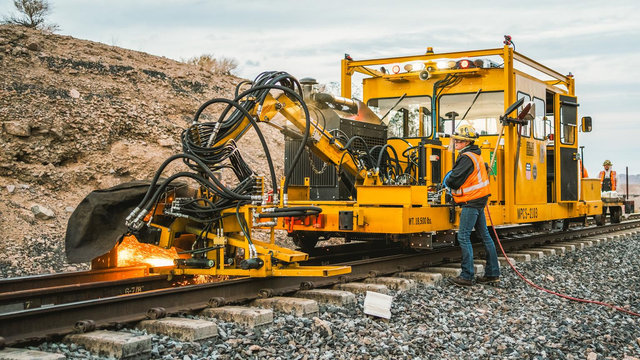
January 25, 2024
Union Pacific is Making Progress Preventing Derailments

And when I started, there was no such thing as Positive Train Control, a system designed to automatically stop a train before certain incidents occur.
The technological advances I’ve seen within our industry are reflected in the numbers – serious derailments on Union Pacific’s network declined 26% in 2023 compared with 2019, while average maximum train length grew. And, over the past 10 years, track-related derailments declined 28%.
Earlier this month, National Transportation Safety Board Chairwoman Jennifer Homendy put it best when she testified, “We need to keep in mind rail transportation is not only cleaner and more fuel efficient than transportation on our roadways. It’s also far, far safer.”
But our work is not done. Union Pacific is committed to achieving the best safety results in the industry. That means every employee goes home safely to their families every day, customers receive their goods and communities thrive and prosper through economic development. We’re leveraging a variety of tools from technology to training, and an aggressive capital investment strategy to enhance rail safety.
Robust Capital Investments Harden Infrastructure, Support Safety

Union Pacific is responsible for maintaining its 32,000-mile network, ensuring no matter what Mother Nature throws at us, our railroad is in top operating condition to serve our customers. We plan to invest $3.4 billion to continue enhancing our network and equipment in 2024.
As part of that investment, we have a robust network of more than 7,000 wayside detection devices that monitor the condition of freight cars and locomotives in real time, and we plan to add more. These wayside detectors are electronic sensors voluntarily installed along the tracks used to measure strain, temperature, acoustic signature and dimensions of various components such as bearings, wheels, trucks and braking systems.

Detectors are placed across Union Pacific’s network using algorithms that consider a number of factors, such as traffic density. They generate 16 million data points per day, and if a potential issue is detected, the train crew and dispatchers are alerted. Timely response helps us address potential risk and keeps trains on track to their destination.
Our Engineering teams visually inspect about 4.5 million miles of track every year. We also use manned and autonomous equipment to inspect track, covering about 500,000 miles in 2023 – that’s enough to cover our entire network more than 15 times. Our use of autonomous technology, which can identify potential risks that are not often visible to the human eye, increased by 33% since 2022.
Tech-Enabled Train Building
What if we could test every train that runs on Union Pacific’s network, calculating the best routes and the order of cars to ensure as safe a journey as possible? We can – and we do with Precision Train Builder. It’s a robust physics and simulation engine that can predict the in-train forces that may occur during a trip to build safe trains. This powerful tool helps our team determine how a train will handle while enroute, where cars should be placed in the lineup, the number of locomotives needed and the best routes. It’s also an excellent tool to enhance employee training.
Employees: The Eyes and Ears of the Railroad
Day in and day out, we work to give our employees the tools and the skills needed to keep them and the communities we serve safe. In 2022, Union Pacific averaged nearly 47 hours of training per employee and craft professionals completed roughly 10,000 courses on topics such as CPR, welding, ballast tamping, track inspection and locomotive maintenance.
Learning from one another and having each other’s back is critical. Our employees are the railroad’s eyes and ears in thousands of communities, providing ideas and identifying opportunities to enhance safety on the ground. Last year, employee feedback led to a new visual aid that standardizes switch targets, the indicators that tell train crews whether trains will be guided, or switched, from one track to another.
It’s examples like this of employee innovation that will lead our railroad into the future.
Preparing First Responders
In every community, first responders are the first line of defense and valued partners if an incident occurs. We believe preparation is critical for a quick response and we work with emergency response personnel to implement preparedness tools and approaches, including sharing best practices and jointly practicing drills.
Last year, we had the privilege of training more than 6,400 first responders in railroad communities across our network and participated in six large-scale drills. The training includes classroom and hands-on learning activities using real-world scenarios that consist of how to contact the railroad during an emergency, how to read shipping documentation and safety considerations for hazardous materials. Our Hazmat team is dedicated to ongoing work with community partners this year as we continue to focus on prevention and preparedness.
Every Community Matters
Every community that surrounds our railroad tracks matters to Union Pacific and the men and women who work here. Our commitment is a promise that we will not be satisfied until everyone goes home safely to their families.